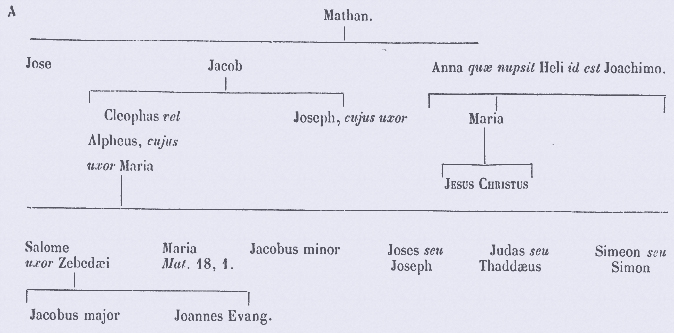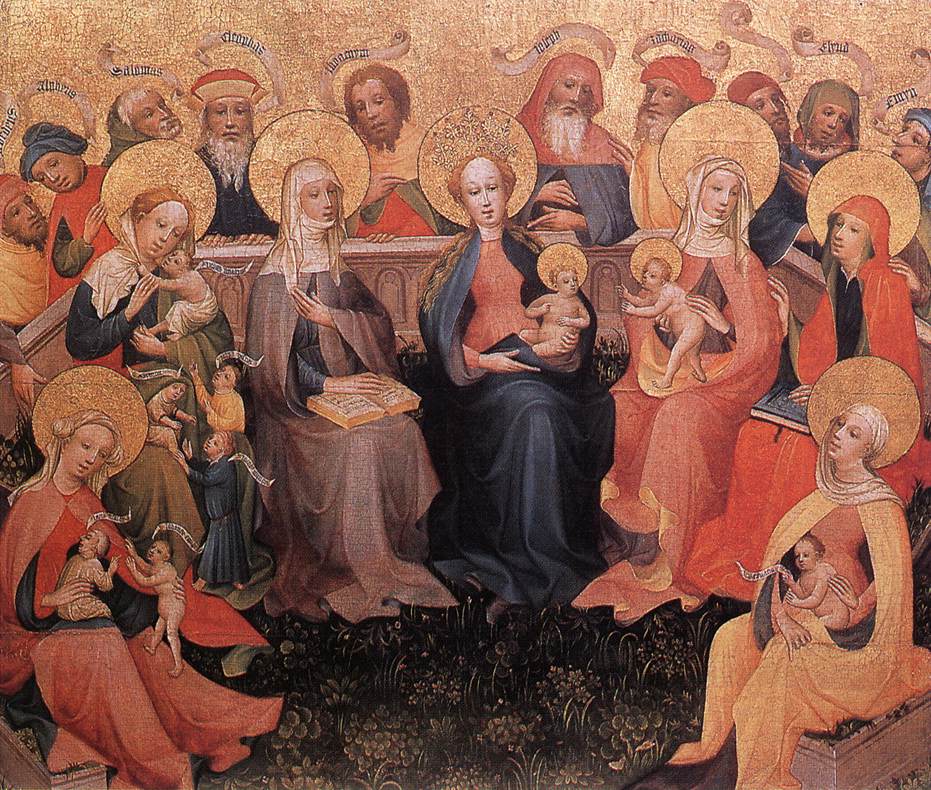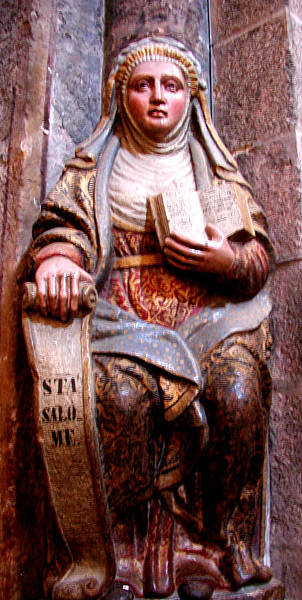
Acta Sanctorum, October vol. 9, 437
The people named in charts like this are called the "Holy Kinship," which is the subject of many images such as this one:
In the Camargue, the region around Stes-Maries-de-la-Mer, a number of churches have chapels and statues dedicated to the two Marys (example).
The third locale is Verulana, present-day Veroli, in Lazio. The tradition there also has the two saints sailing away from Palestine in a small boat, in this case to Rome. There they conferred with Pope Clement, who encouraged them to make for Verulana, where they remained until they died and were interred in the same sepulchre. I have not yet seen any images related to this tradition, though it seems likely that some exist.
Prepared in 2015 by Richard Stracke, Emeritus Professor of English, Augusta University

Statue in the Cathedral of St. James in Compostela (See description page)
MORE IMAGES
- Etching of Mary Salomé in her boat, in the Wellcome Library, London.
- The shrine of the two Marys, in Stes-Maries-de-la-Mer.
DATES
- According to the Verulana version of the story, Salomé died on October 22, her feast day, and Mary Jacobé on May 25.
BIOGRAPHY
- The medieval legends are available only in Latin in the Acta Sanctorum, October vol. 9, 435-476.
ALSO SEE
NOTES
1 Catholic Encyclopedia, s.v. "Salome." Mark 15:40 is "And there were also women looking on [the Crucifixion] afar off: among whom was Mary Magdalen, and Mary the mother of James the less and of Joseph, and Salome." Matthew 27:55-56 is "And there were there many women afar off [i.e. from the Crucifixion], who had followed Jesus from Galilee, ministering unto him: Among whom was Mary Magdalen, and Mary the mother of James and Joseph, and the mother of the sons of Zebedee.